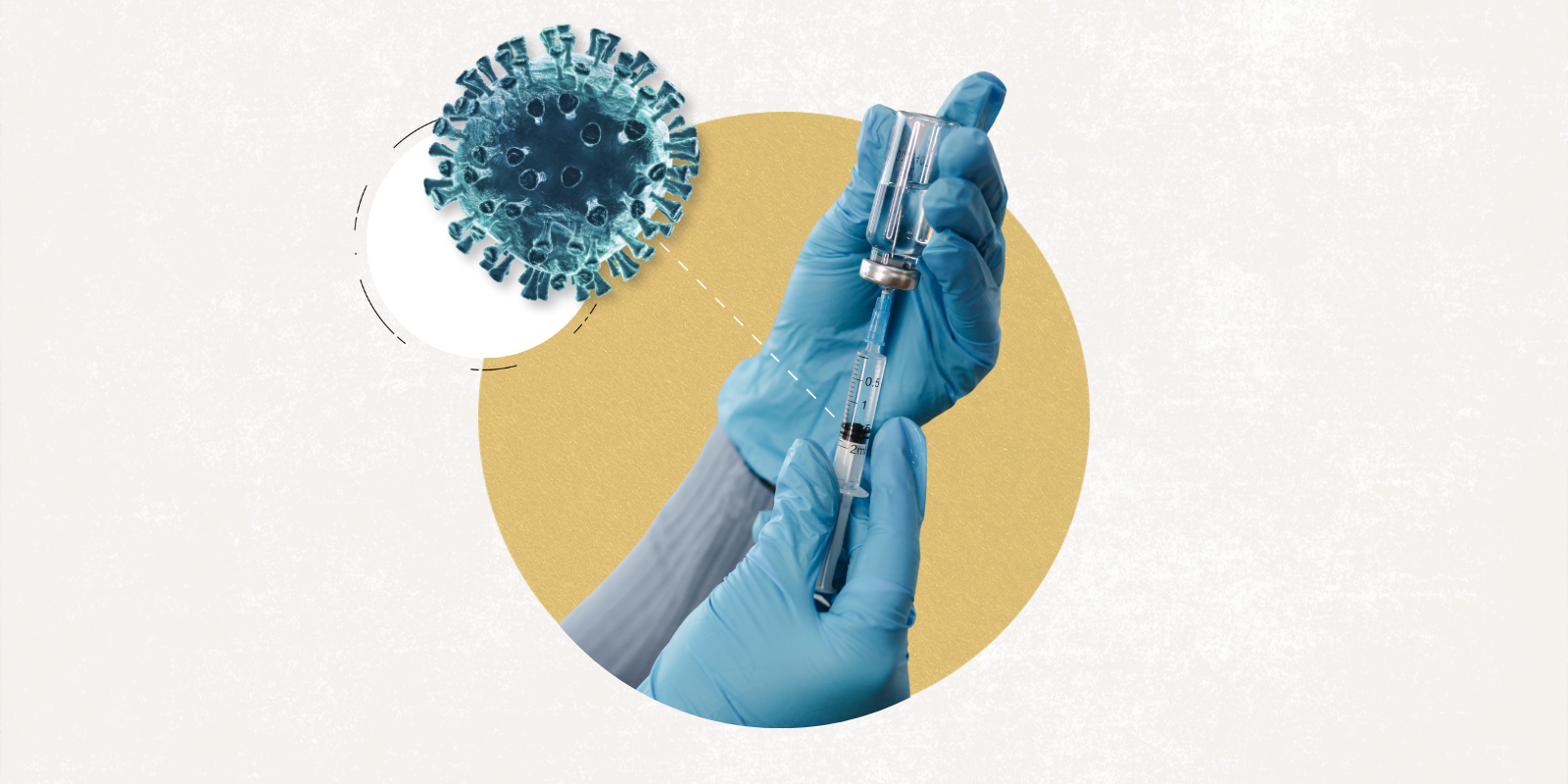For the nearly 190 million Americans vaccinated against last year’s holiday-crashing coronavirus, the 2021 season appears brighter. The chances of ringing in the New Year in a hospital bed because of earlier social merry-making are dramatically lower this year for people who took the shot.
Unfortunately, thanks to the new kid on the block, unbridled festivity planning still hold risks. With the delta variant’s emergence just as vaccines began to wane, how safe holiday gatherings are this year will depend largely on the guest list.
“There are some things in play that we still don’t have a full quantitation on,” said Michelle Barron, MD, professor and infectious disease expert at the University of Colorado School of Medicine (SOM), referring to questions surrounding booster shots, breakthrough cases, transmission rates and the highly-contagious delta’s prevalence when the holidays arrive.
With the only certainty being that unvaccinated people carry the biggest risk and that COVID risk rises congruently with age, weighing the safety of holiday plans is an individual family task. And it’s largely a numbers game.
Unvaccinated: the highest exponent
“The risks continue to be really in the hands of the non-vaccinated,” said Ross Kedl, PhD, SOM professor of Immunology & Microbiology at the CU Anschutz Medical Campus.
See other articles in the COVID-19 Vaccine Series
“They are at serious risk of getting the infection to begin with, because delta is so much more contagious.” Then, emerging evidence shows that those unvaccinated people are more contagious than vaccinated people with breakthrough infections, Kedl said.
The newer research goes against earlier reports from the Centers for Disease Control and Prevention that vaccinated individuals with breakthrough cases are just as infectious and should adhere to the same mask mandates as the unvaccinated, Kedl said.
“That was totally wrong. Even if you get a breakthrough infection, the virus that is replicating in you is coating itself with antibodies in your nose, in your mouth and in your system,” he and other scientists now believe. “So even if you are expelling virus, you’re expelling antibody-coated virus, which is really not as infectious.”
Playing the ‘numbers game’
That’s not to say the breakthrough threat can be taken out of the equation. With rates of infection still high, and the delta variant more than twice as transmissible as the virus of the 2020 holiday season, breakthrough cases are still an issue. “It becomes a numbers game,” Barron said.
“If your vaccine is 90% effective, but things are spreading at 10 times the rate, that 10% (pool of the infected) becomes bigger and bigger. Those who aren’t vaccinated are more vulnerable, and then there’s spillage over into those who are vaccinated just because of the sheer numbers.”
“The risks continue to be really in the hands
of the non-vaccinated.” – Ross Kedl, PhD
While Barron “absolutely would not” mix with unvaccinated guests, she notes that her job as one of the state’s top infectious disease experts makes her “more conservative” than many people.
Her advice: Look at the numbers. Be more cautious if delta’s presence and transmission rates remain high into the holiday season. If the R-naught (basic reproduction number) falls below 1, and transmission rates drop below 5%, then maybe some families will decide the odds are worth the risk.
Monitor the rates in the location of planned holiday gatherings, nationally or locally, Barron said.
Breakthroughs: the silent factor
Also, the combination of waning vaccine efficacy with delta’s high infection rate has led to rising numbers of breakthrough infections, which account for roughly 20% of all cases. Studies show the shield against infection begins weakening at six months, mostly in Pfizer and J&J vaccine recipients.
The drop in protection was dramatically less for severe disease. One study found the Pfizer shot was 90% effective against severe COVID but dropped to 47% effective against transmission six months after full inoculation.
Breakthroughs are frequently (but not always) mild – so mild, they can present differently and go unnoticed, Barron said. Headaches and sniffles might be written off as allergies or mild colds, putting older family members and others highly susceptible to severe COVID at risk.
Booster shots up the game
Booster shots offer another layer of protection against breakthrough infections, particularly important for older adults, Kedl said. To protect for the holiday season, third doses should be taken at least three weeks before Thanksgiving.
Take the testTesting before holiday gatherings, although not guaranteed, can provide an added layer of protection. Options include:
|
“If you take a look at the vaccinated people who are affected by a breakthrough infection, the ones who are being hospitalized are all over the age of 65, with a few very rare exceptions. And that’s because your immunity wanes much more quickly the older you get,” he said.
So far, only Pfizer boosters have been approved, and only for high-risk groups (over 65, immunocompromised, teachers and healthcare workers). Third shots for Moderna and J&J are being considered and could be approved this week.
Kedl emphasized that age is a crucial number in the family holiday-planning equation. The pandemic’s coronavirus has an unusually clear parallel between increasing age and severity, as other viruses tend to be more deadly on both ends of the age spectrum.
“That’s why the boosters were approved for 65 and older. But it’s not like if you are 64, you are totally safe.”
The kid factor: a tolerable risk?
Although COVID risk is lowest in the young, it’s not absent. With kids under 12 still unvaccinated as the holidays near, that poses some holiday-mixing concerns for some parents.
“It’s so tough in terms of, well, you want them to see Grandpa, and you want to be around Grandpa, but you don’t want to get Grandpa sick,” Barron said.
“The good news is that the FDA is going to be meeting in the next couple of weeks to decide on vaccinations for ages 5 to 11, so that will potentially open up that avenue in time for the holidays,” she said. “Your kids could probably be fully vaccinated by Thanksgiving or pretty close to that.”
Yet vaccine approval for tots under age 5, while in clinical trials, is not likely in time for the holidays. “Then it becomes an assessment of how much risk are you willing to tolerate,” Barron said. Having gatherings outside, masking tots around grandparents or distancing a children’s table from an adult table are risk-lowering options.
Children’s risk low, but not zero
For a healthy, vaccinated younger adult, the result of a breakthrough infection from the little ones would probably amount to a mild cold, Kedl said. And that outcome might not be completely negative, he said.
Did you know? Experts predict last year’s absent flu season will return this year, based on modeling and an early influx of pediatric respiratory infections? Flu shots can help keep vulnerable people (including the very young and very old) out of the hospital – and save the holidays for anyone. Get a flu shot at least two weeks before the season begins, experts advise.
“The upside of getting an infection now if you’re vaccinated is that you are going to be nicely boosted against delta and a lot of other variants,” Kedl said. “But I wouldn’t go seek it out,” he added.
Evidence also suggests younger kids transmit the virus at much lower rates than adults and, more recently, some data equivalated their risk of infection to that of vaccinated 50-year-olds.
“But kids still can get sick,” Barron said. “And there’s no way to know which ones will get really, really sick.”
End problem-solving with a test
When the equation doesn’t produce a clear answer, antigen tests are another option that can tip the sum in the family-gathering favor.
“The antigen tests are pretty cheap,” Kedl said. “They are not 100% with whether you actually have a coronavirus infection, but they do correlate really well – in the upper 95th percentile range – with whether or not you could be contagious.”
If a test comes back negative right before a gathering, that person will likely remain negative for producing infectious levels of virus throughout the evening, Kedl said.
“That certainly helps to capture people,” Barron said of pre-event testing. Because of the risk of false negatives, she advises against relying on tests if a person has symptoms.
As with all things COVID, the bottom line is not clear. If the guest list is all vaccinated, that’s the greenest light. “The risk of a vaccinated person getting it from another vaccinated person are ridiculously low,” Kedl said. In all other cases? Do the math.



.png)

